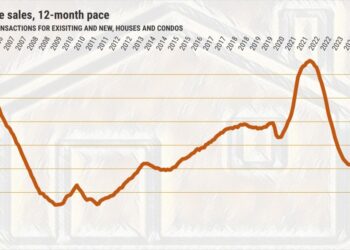The current Powerball jackpot has reached an estimated $747 million, and that staggering figure is part of a larger trend.
Billion-dollar lottery jackpots, once rare, are happening more often than ever. Five of the 10 largest lotto jackpots occurred in 2021 and 2022, according to an analysis by The Associated Press. And 2022 alone saw jackpots that topped $1 billion.
Those giant jackpots are no accident. Instead, they’re a product of several factors: changes to lottery gameplay, interest rates and — perhaps surprisingly — a little human psychology.
Reason No. 1: Changes to the formula
In recent years, the two largest lotteries in the United States, Powerball and Mega Millions, have tweaked their formulas to create larger jackpots. Those tweaks also make it harder to win the big prize.
Before we dive in, here’s a quick lesson on Powerball. Players select six numbers. Five of these numbers are between 1 and 69, which are represented by white balls in the drawing and, if chosen, may yield a prize, but not the jackpot. There’s also the “Powerball” number, which is between 1 and 26 and represented by a red ball. If all five of your white-ball numbers are drawn, you win $1 million. If those are drawn — as well as your red Powerball number — you hit the jackpot.
In 2015, Powerball increased its pool of white balls from 59 to 69, while its pool of red balls shrunk from 35 to 26. That change gave individuals a 1-in-25 chance of winning anything — better than the old odds, which were 1-in-32, according to the Washington Post. However, the possibility of anybody winning the jackpot shrunk from about a 1-in-175-million to a 1-in-292-million, according to Lottery.net, which posts winning numbers, statistics and game information.
Every time there’s a Powerball draw and nobody wins the jackpot, the jackpot grows. The harder it is to win, the bigger that jackpot will get. There are Powerball drawings every Monday, Wednesday and Saturday.
Meanwhile, in…
Read the full article here







